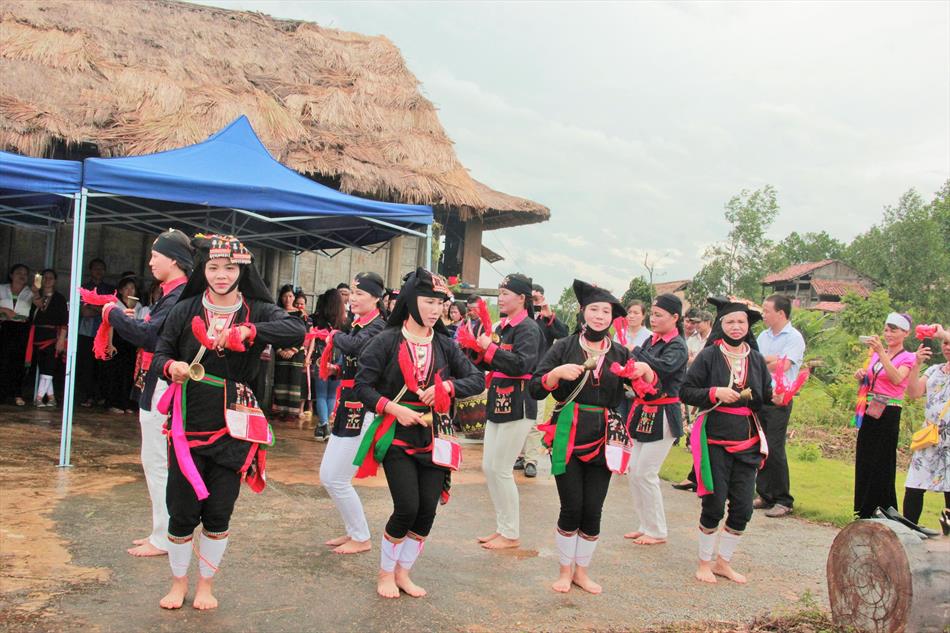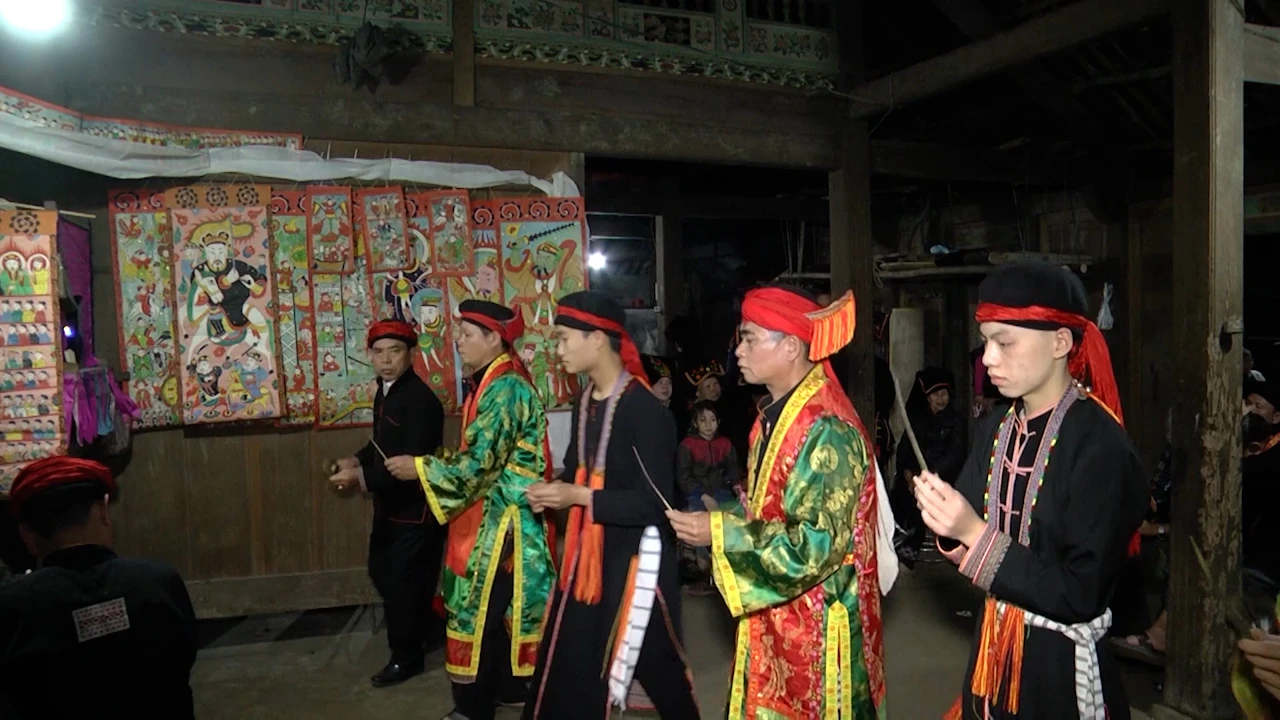Unique Tet Nhay Festival of the Dao Tien People

The Tet Nhay Festival takes place continuously for 3 days and 3 nights, from the 29th of Tet to the 2nd of Tet. It is held at the head of the family's house because this place has the Hung Lau - the ancestral altar of the whole family. To organize the Tet Nhay Festival, people have to prepare busily from the 26th of Tet. They need to prepare necessary items such as: 6 fresh bamboo trees, 6 sugarcane trees, sticky rice flour, gongs, drums, small bells, various swords, and wooden sticks. After completing the preparation, those preparing the ceremony will invite 3 to 4 shamans to perform the rituals. On the 29th of Tet, activities will take place such as making cakes and molding sticky rice flour to form round fruits attached to bamboo trunks and branches. Then, 6 pairs of bamboo and sugarcane will be set up, set up in two rows next to the ancestral altar. The bamboo tree with many fruits will symbolize the Sau tree (ma clau deng), while the sugarcane tree symbolizes the tro chi tree (ba dao). Both types of trees represent the attachment and closeness to nature from the ancient days of the Dao Tien people.
On the 29th and 30th nights of Tet, the Khai Le (Khoi Nhang) and Pung Nhang ceremonies take place. The whole family will have to prepare a grand offering tray to invite ancestors and gods to attend the ceremony. After that, everyone will gather around the attractive Xoe dance. After the New Year's Eve moment, the following ceremonies will be performed: Xuat Panh (sending off the bad things of the old year) and Sieu Panh (bringing objects into the house with the hope of receiving good luck).

Next is the Thanksgiving ceremony, also known as Pai Nhang. All men in the family, regardless of age, must be present at the head of the family's house, then line up and kneel before the ancestors' coffins to bow to heaven and earth. This is a ceremony to express gratitude to the ancestors, to heaven and earth for bringing them good things in the past year, and is also a way to ask for good things to continue to come to them in the new year. Next, it is impossible not to mention the Xoe Vong (Chuot Dung) ceremony - a ceremony that only men and sons in the family can attend. This is a ceremony where the elderly pass on worship songs and ritual songs to their children and grandchildren. On the first day of Tet, rituals such as "Xuat panh", "Sieu panh" and "Thank for heaven and earth" will be repeated many times until the first night of Tet, which is the last night of the "Tet nhay" ceremony. Everyone participating in the ceremony will join in the extremely jubilant and joyful Xoe dance.
The second day of Tet is the end of the Tet Nhay (Sieu Lang) festival. On this day, the family will prepare trays and offerings to offer to the village temple. After that, they return to the head of the family's house and choose 3 men to perform the "cutting" tree ceremony, everyone will try to pick up a piece of sugarcane or some kind of fruit for luck.
Tet Nhay is a time for family reunions, for everyone to meet and exchange good wishes, this is a happy day for the whole community. Although the festival is little known to outsiders, for the Dao people, it has a lot of meaning. The festival is the thread that has tightly connected the Tien Dao ethnic community for generations. Every spring, we have the opportunity to listen to the sounds of drums and gongs and witness the bell dances in the Tet Nhay festival, creating a beautiful cultural feature among the Tien Dao ethnic groups.

